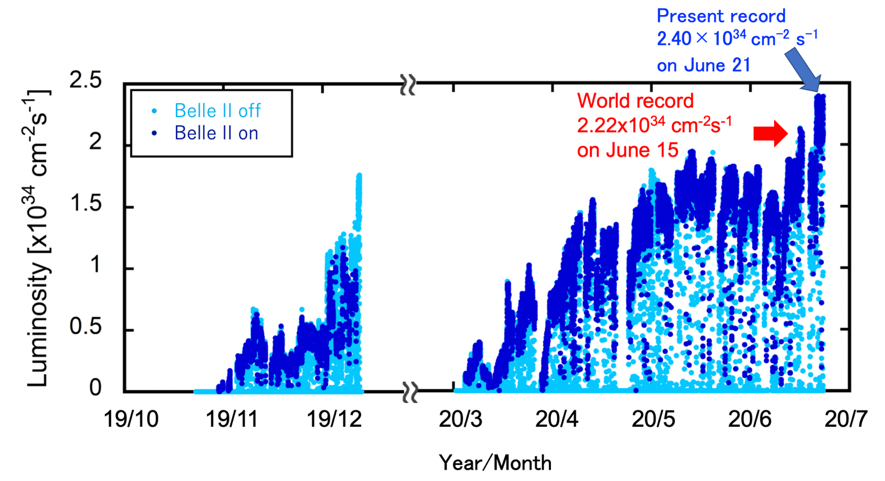
Fig. 1 The instantaneous luminosity of SuperKEKB measured at 5-minute intervals from Fall 2019 to June 22, 2020. Values are on-line measurements and contain an approximate 1% error. / KEK
2020.7.1:Added a new link to related links.
Japan’s High Energy Accelerator Research Organization (KEK) has been steadily improving the performance of its flagship electron-positron collider, SuperKEKB, since it produced its first electron-positron collisions in April 2018. At 20:34 on 15th June 2020, SuperKEKB achieved the world’s highest instantaneous luminosity for a colliding-beam accelerator, setting a record of 2.22×1034 cm-2 s-1. Previously, the KEKB collider, which was SuperKEKB’s predecessor and was operated by KEK from 1999 to 2010, had achieved the world’s highest luminosity, reaching 2.11×1034 cm-2 s-1. KEKB’s record was surpassed in 2018, when the LHC proton-proton collider at the European Organization for Nuclear Research (CERN) overtook the KEKB luminosity at 2.14×1034 cm-2 s-1. SuperKEKB’s recent achievement returns the title of world’s highest luminosity colliding-beam accelerator to KEK.
Read more
Link
Related Links
Past Press Release
- KEK Web Release Belle II explores new “portal” into dark matter - First results from the Belle II Experiment
- KEK Kick-off of the Belle II Phase 3 Physics Run
- KEKSuperKEKB Phase 3 (Belle II Physics Run) Starts
News Links
- KEK IPNS Belle II changing of the guard with Prof. Toru Iijima as the new spokesperson.
- KEK IPNSThe 1st “Belle II Physics Week” was held at KEK
- KEK IPNSIsraeli Ambassador to Japan Visits KEK Tsukuba Campus for Flag Raising Ceremony Commemorating Israel’s Participation as 25th Member Nation of Belle II Experiment
- KEK IPNS【Belle II Experiment】QCS Superconducting Magnets for Final Focusing of e-, e+ Beams Connected to Central Beam Pipes inside Belle II, Remote Vacuum Connection (RVC) Works Successfully
- KEK IPNSKEK/IPNS Official Website【Special Article】BelleⅡExperiment (in Japanese)